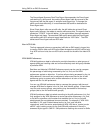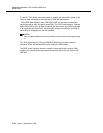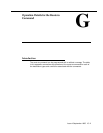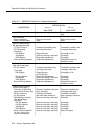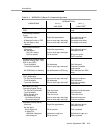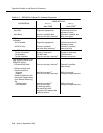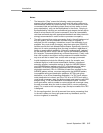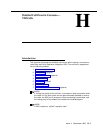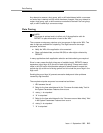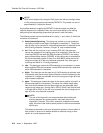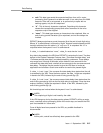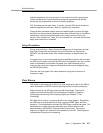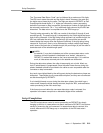
Detailed Call Flow for Converse—VRI Calls
H-2 Issue 4 September 1995
Converse Call Placement
The first action taken by the
converse-on
step is to deliver the call to the
converse split. Ringback tone is not heard by the caller. Any audible feedback
supplied by vector processing remains until the VRU answers the call and all
digits (if administered) have been outpulsed to the VRU. Vector processing is
suspended. Callers remain in any nonconverse split queues, and they retain their
position in queue while the converse session is active.
If a Call Prompting TN744 TTR is allocated to the call, the TTR is released. Any
dial-ahead digits are discarded. However, any digits collected prior to the
converse-on
step are kept.
Calls to busy converse splits are allowed to queue. The priority of the call in
queue is administrable within the
converse-on
step. Again, any audible feedback
supplied by vector processing continues until the call is answered by the VRU
and any data is outpulsed. Calls to busy converse splits have either no queue or
a full queue fail. For this scenario, a vector event is logged, and vector
processing continues at the next vector step.
Whenever a
converse-on
step places a call to an auto-available split whose
agents are all logged out, the call is not queued. Instead, the
converse-on
step
fails, a vector event is logged, and vector processing continues at the next vector
step.
NOTE:
Usually, this scenario occurs whenever the Voice Response Unit (VRU)
goes down, the ports are members of an Auto-Available Split (AAS) and the
Redirection on No Answer (RONA) feature has taken all the ports out of
service.
The originator’s display is not changed by the terminating or answering of a
converse call. Also, whenever a call is delivered to a display station via a
converse-on
step, the station displays the following information: ‘‘Originator
Name to VDN Name.’’ Conventional Call Vectoring rules for Override are in effect.
Valid destinations for converse calls must be vector-controlled and include the
following:
— Hunt groups
— ACD (including Auto-Available) splits
— Agent (including Auto-Available) skill groups
— AUDIX hunt groups.
Undefined and nonvector-controlled hunt group, split or skill numbers are
rejected at administration time.



